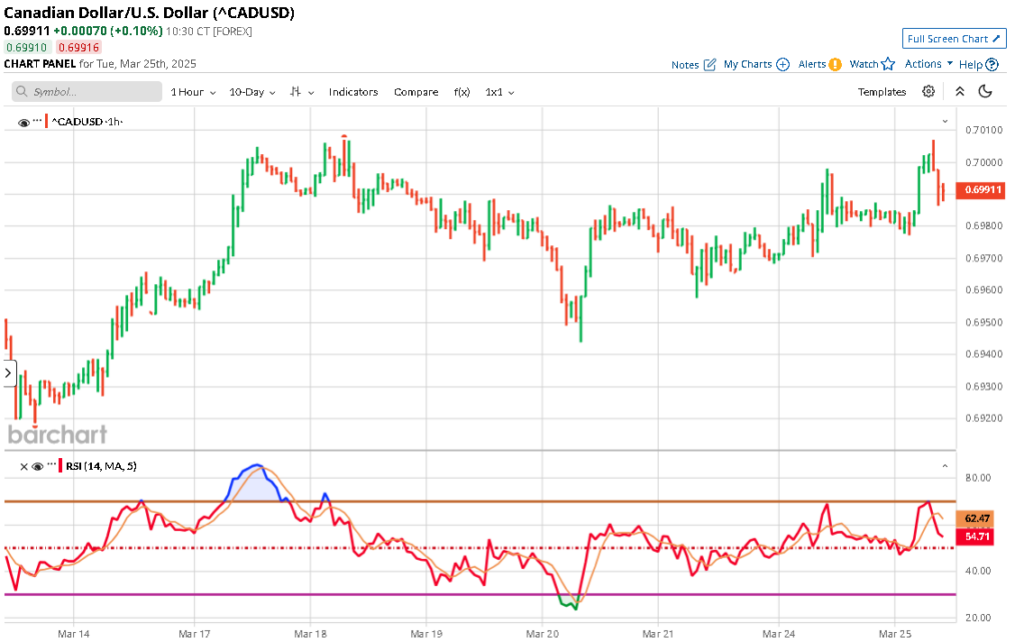The Canadian dollar CADUSD -0.20%decrease pulled back from an earlier one-month high against its U.S. counterpart on Wednesday as investors braced for expected U.S. auto tariffs and weighed minutes from the Bank of Canada’s latest meeting.
The loonie was trading nearly unchanged at 1.4283 per U.S. dollar, or 70.01 U.S. cents, after earlier touching its strongest level since Feb. 24 at 1.4236.
U.S. President Donald Trump will announce plans for long-promised tariffs on automotive imports at a news conference on Wednesday, widening the global trade war.
Canada sends about 75 per cent of its exports to the United States including oil and autos.
Canadian Prime Minister Mark Carney said if the ruling Liberals won an April 28 election, his government would create a C$2 billion ($1.40 billion) fund to boost the auto sector’s competitiveness.
The Bank of Canada saw less evidence of downward pressure on inflation even as it decided to cut rates by 25 basis points on March 12, a summary of monetary policy deliberations showed.
“Policymakers are extremely sensitive to upside inflation risks after the past few years, especially with fiscal stimulus likely playing a role in the response to the trade war,” Benjamin Reitzes, Canadian rates & macro strategist at BMO Capital Markets, said in a note.
“That won’t keep the BoC from cutting rates if tariffs worsen, but it suggests any further easing won’t be aggressive and limits how low the Governing Council is willing to go.”
The U.S. dollar added to recent gains against a basket of major currencies, while the price of oil settled 0.9 per cent higher at $69.95 a barrel.
Canadian bond yields moved higher across the curve, tracking moves in U.S. Treasuries. The 10-year was up 4 basis points at 3.12 per cent, after earlier touching its highest level since Feb. 24 at 3.142 per cent.
